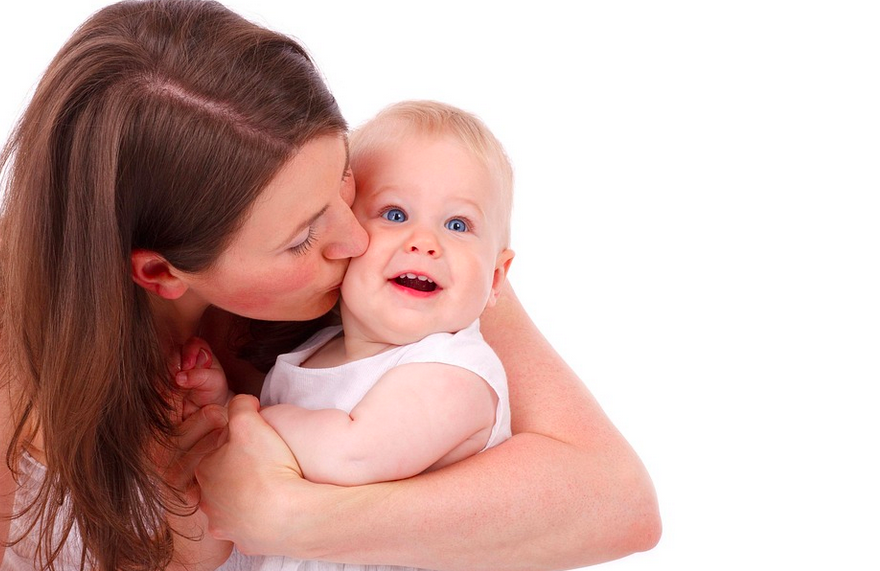5 Ways Babies Communicate

Babies are born with the innate ability to communicate, even before they develop the ability to speak. From the moment they are born, they use a variety of non-verbal communication techniques to express their needs and emotions. Understanding these communication cues is important for parents and caregivers to provide appropriate care and support to the child. Later language skills are also correlated with communication abilities at a young age. In this article, we will discuss how babies communicate and list five examples of their communication methods.
Babies Communicate By Crying
One of the primary ways that babies communicate is through crying. Crying is a baby’s way of expressing their needs and discomforts. A baby’s cry can convey a variety of messages, such as hunger, fatigue, pain, or discomfort. Parents and caregivers need to pay attention to the type and duration of crying to determine what the baby needs. For example, if a baby’s cry is short and intermittent, it may indicate that they are hungry, while a prolonged cry may indicate pain or discomfort.
Facial expressions are another way that babies communicate. Even before they can speak, babies can communicate through their facial expressions. For example, when a baby is happy, they may smile, coo, or make eye contact. When they are unhappy, they may frown, pout, or avoid eye contact. Parents and caregivers can learn to recognize these expressions and respond accordingly to the baby’s needs.
Babies Communicate with Body Language
Body language is also an important way that babies communicate. Babies use their body language to communicate their needs and emotions. For example, if a baby is uncomfortable, they may squirm or arch their back. If they are tired, they may rub their eyes or yawn. Parents and caregivers need to pay attention to the baby’s body language to understand what they need.
Gestures are another way that babies communicate. As babies develop their motor skills, they start to use gestures to communicate their needs and wants. For example, a baby may point to something they want or wave goodbye. They may also use gestures to communicate their needs, such as holding their arms up to be picked up. Parents and caregivers can encourage this form of communication by responding to the baby’s gestures and reinforcing them.
Babbling is another way that babies tell caregivers what they want to say. As babies start to develop their language skills, they start to make sounds and babble. Babbling is the first step in the development of language and is a way for babies to practice the sounds and rhythms of language. Parents and caregivers can encourage babbling by talking to the baby, responding to their sounds, and imitating their babbling.
In summary, babies use a variety of non-verbal communication techniques to express their needs and emotions. These include crying, facial expressions, body language, gestures, and babbling. Parents and caregivers need to pay attention to these communication cues to provide appropriate care and support to the baby.
Now let’s look at five examples of how babies communicate:
- Crying: As mentioned earlier, crying is a primary way that babies communicate. It can convey a variety of messages, such as hunger, fatigue, pain, or discomfort. Parents and caregivers need to pay attention to the type and duration of crying to determine what the baby needs.
- Smiling: Smiling is a way that babies communicate happiness and pleasure. They may smile in response to a familiar face or a pleasant experience. Parents and caregivers can respond to the baby’s smile by smiling back and interacting with them.
- Eye Contact: Babies use eye contact to communicate their needs and desires. They may make eye contact to get attention or to express interest in something. Parents and caregivers can respond to the baby’s eye contact by engaging with them and responding to their needs.
- Reaching: As babies start to develop their motor skills, they start to reach for objects they want. Reaching is a way that babies communicate their desires and needs.
- Laughing: By the time your child turns one year old, they should have mastered their belly laugh, which typically begins around the 3- to 4-month mark. Much like smiling, laughing is an expression of pleasure for babies. Laughing is also a form of communication between individuals. If you laugh when your baby laughs and they laugh in return, they are learning the conversational skill of taking turns. Laughing together with your little one is an excellent way to encourage communication development. So, the next time your child gets tickled, take pride in their growing abilities to communicate!
Therapy Works Together – Online Speech Therapy for Children and Adults
We care about every child and adult achieving their speech, language and communication goals. You can start speech therapy online now with a certified speech language therapist. We’ll discuss your personal needs, develop an individualized treatment plan, and schedule affordable online therapy sessions online at your convenience.


